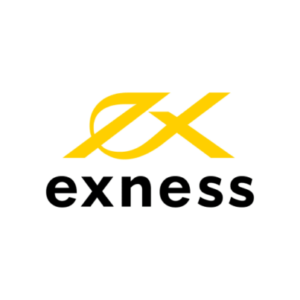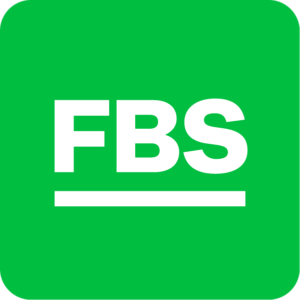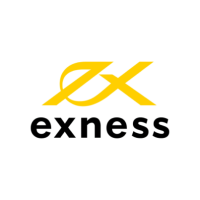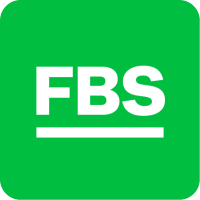Swing trading is a popular trading strategy that aims to capture short-term gains in the stock market. It involves holding stocks for a period of days to weeks and profiting from the price swings that occur within that time frame. In this article, we will provide a comprehensive guide to swing trading for beginners, covering everything from the basics to advanced strategies.
Table of Contents
- What is Swing Trading?
- Benefits of Swing Trading
- Risks of Swing Trading
- How to Get Started with Swing Trading
- Set Goals and Develop a Strategy
- Choose a Brokerage and Trading Platform
- Conduct Fundamental and Technical Analysis
- Common Swing Trading Strategies
- Breakout Trading
- Pullback Trading
- Trend Trading
- Gap Trading
- Tools and Indicators for Swing Trading
- Moving Averages
- Relative Strength Index (RSI)
- Fibonacci Retracement
- Risk Management for Swing Trading
- Set Stop-Loss Orders
- Use Proper Position Sizing
- Diversify Your Portfolio
- Mistakes to Avoid in Swing Trading
- Chasing the Market
- Overtrading
- Ignoring Fundamental Analysis
- Best Practices for Successful Swing Trading
- Stay Disciplined and Patient
- Keep Learning and Adapting
- Conclusion
- FAQs
What is Swing Trading?
Swing trading is a trading strategy that involves buying and holding a stock for a period of days to weeks, with the goal of profiting from the price swings that occur within that time frame. Swing traders aim to capture short-term gains by buying stocks that are trending up and selling them when they begin to trend down.
Swing trading differs from day trading in that swing traders hold their positions for longer periods of time. It also differs from long-term investing in that swing traders aim to profit from short-term price movements, rather than holding stocks for years.
Benefits of Swing Trading
Swing trading has several benefits over other trading strategies. For one, it allows traders to profit from short-term price movements without having to hold positions overnight, which can be risky due to market volatility.
Swing trading also offers flexibility, as traders can choose to hold their positions for as long or as short a time as they wish. This makes it a good option for those who have limited time to dedicate to trading.
Another benefit of swing trading is that it allows traders to take advantage of market trends, without having to worry about the long-term prospects of a particular company.
Risks of Swing Trading
While swing trading offers many benefits, it also comes with risks. One of the biggest risks is that swing traders must be able to accurately predict short-term price movements, which can be difficult to do.
Another risk is that swing traders are exposed to market volatility, which can lead to significant losses if the market moves against them. Additionally, swing traders must be able to manage their positions carefully, as holding onto losing positions can lead to even greater losses.
How to Get Started with Swing Trading
Getting started with swing trading is relatively easy, but it does require some preparation and planning. Here are the steps you should take to get started:
1. Set Goals and Develop a Strategy
Before you begin swing trading, it’s important to set goals and develop a trading strategy. Your strategy should include things like what types of stocks you will trade, what indicators you will use to identify trades, and how you will manage risk.
2. Choose a Brokerage and Trading Platform
Once you have a trading strategy in place, you will need to choose a brokerage and trading platform. Look for a broker that offers low commissions and a user-friendly platform with tools that will help you execute trades and manage your positions.
3. Conduct Fundamental and Technical Analysis
Before you start trading, you should conduct both fundamental and technical analysis to identify potential trades. Fundamental analysis involves looking at a company’s financials and industry trends to determine whether it is a good investment. Technical analysis, on the other hand, involves analyzing stock price charts and using indicators to identify patterns and trends.
Common Swing Trading Strategies
There are several common swing trading strategies that traders use to identify trades. Here are four of the most popular:
1. Breakout Trading
Breakout trading involves buying a stock when it breaks out of a trading range, typically a resistance level. Traders will look for stocks that have been trading in a range for an extended period of time, and then buy when the stock breaks through the resistance level.
2. Pullback Trading
Pullback trading involves buying a stock after it has pulled back from its recent high. Traders will look for stocks that have had a significant uptrend, and then buy when the stock pulls back to a key support level.
3. Trend Trading
Trend trading involves buying stocks that are trending up and selling stocks that are trending down. Traders will use technical indicators to identify the trend and then buy or sell accordingly.
4. Gap Trading
Gap trading involves buying a stock when it gaps up, typically in response to a positive news announcement. Traders will look for stocks that have a history of gapping up and then buy when the stock gaps up.
Tools and Indicators for Swing Trading
There are several tools and indicators that swing traders use to identify potential trades. Here are three of the most popular:
1. Moving Averages
Moving averages are used to identify trends and support and resistance levels. Traders will look at the stock’s moving average over a specific time period and use it to identify buy and sell signals.
2. Relative Strength Index (RSI)
The RSI is a momentum indicator that measures the strength of a stock’s price action. Traders will look for oversold or overbought conditions to identify potential trades.
3. Fibonacci Retracement
Fibonacci retracement is a tool that traders use to identify potential support and resistance levels. Traders will look at the stock’s price movement and use the Fibonacci sequence to identify key levels.
Risk Management for Swing Trading
Risk management is crucial for swing traders, as they are exposed to market volatility and the risk of significant losses. Here are three strategies for managing risk:
1. Set Stop-Loss Orders
Stop-loss orders are used to limit losses by automatically selling a stock if it reaches a certain price. Traders can set stop-loss orders to limit their losses and protect their capital.
2. Use Proper Position Sizing
Proper position sizing is crucial for managing risk in swing trading. Traders should limit their exposure to any one trade by only investing a small percentage of their capital in each trade.
3. Diversify Your Portfolio
Diversification is key to managing risk in swing trading. Traders should diversify their portfolio by investing in a variety of stocks across different sectors and industries.
Mistakes to Avoid in Swing Trading
There are several common mistakes that swing traders should avoid. Here are three of the most important:
1. Chasing the Market
Chasing the market involves buying a stock after it has already started to move. This can lead to buying at a high price and experiencing significant losses if the stock pulls back.
2. Failing to Manage Risk
Failing to manage risk can lead to significant losses in swing trading. Traders should use stop-loss orders and proper position sizing to limit their exposure to any one trade.
3. Ignoring Fundamentals
While technical analysis is important in swing trading, ignoring fundamentals can be a costly mistake. Traders should pay attention to a company’s financials and industry trends to make informed trading decisions.
Conclusion
Swing trading is a popular trading style that involves buying and holding stocks for a short period of time, typically a few days to a few weeks. To be successful in swing trading, traders need to have a solid trading strategy, choose a reliable brokerage and trading platform, and conduct both fundamental and technical analysis. They should also use common swing trading strategies, tools, and indicators, and manage risk by setting stop-loss orders, using proper position sizing, and diversifying their portfolio. By avoiding common mistakes and staying disciplined, swing traders can potentially earn significant profits in the stock market.
FAQs
- Is swing trading suitable for beginners?
- Swing trading can be suitable for beginners if they have a solid understanding of the stock market and trading strategies. However, it is important to start with a small amount of capital and practice managing risk.
- How long do swing traders typically hold a stock?
- Swing traders typically hold a stock for a few days to a few weeks, depending on market conditions and the trading strategy.
- Can swing trading be done with a small amount of capital?
- Yes, swing trading can be done with a small amount of capital. However, it is important to use proper position sizing and risk management strategies.
- What are some common swing trading strategies?
- Common swing trading strategies include breakout trading, pullback trading, trend trading, and gap trading.
- How can I learn more about swing trading?
- You can learn more about swing trading by reading books and online resources, taking courses, and practicing with a demo account. It is also important to stay up-to-date with market news and trends.
Name
Details
Rating
Regulation: CySEC, FCA, DFSA, FSCA, FSA, CMA
Founded: 2008
Founders: Petr Valov, Igor Lychagov
Year Founded : 2008
Deposit Methods: VISA, MasterCard, Neteller, Skrill, WM, PM, Crypto (MORE)
Leverage: 1:30 | 1:500
Regulation: CySEC, FCA, DFSA, FSCA, FSA.
Min. Deposit: 5 US$
Min. Withdraw : 5 US$
HQ: Sydney, Australia
Platforms: MT4, MT5, ctrader, web trading
Found in: January 30, 2007
Deposit Methods: Bank Wire (BankTransfer), VISA, MasterCard, Neteller, Skrill, WM, PM, Crypto
Year Founded : 2010
Cryptocurrencies:
 Yes
YesDeposit Methods: Local Deposit, Bank Wire (BankTransfer), VISA, MasterCard, Neteller, Skrill, WM, PM, Crypto, USDT
Year Founded : 2010
Cryptocurrencies: (5+) Bitcoin, Litecoin, Ethereum
Deposit Methods: Local Deposit, Bank Wire (BankTransfer), VISA, MasterCard, Neteller, Skrill, WM, PM, Crypto, USDT (MORE)
Year Founded : 2009
Cryptocurrencies:



Deposit Methods: Bank Wire (BankTransfer/SWIFT), VISA, MasterCard, Alipay, Bitcoin, Bitcoin Cash, Boleto, Ether/Ethereum, Litecoin, Local Bank Deposits, M-Pesa, Mobile Money, Monero, PerfectMoney, Ripple, WebMoney
Year Founded : 2009
Cryptocurrencies:



Deposit Methods: Local Deposit, Bank Wire (BankTransfer), VISA, MasterCard, Neteller, Skrill, WM, PM, Crypto, USDT
Year Founded : 2009
Cryptocurrencies:



Deposit Methods: Bank Wire (BankTransfer/SWIFT), VISA, MasterCard, Alipay, Bitcoin, Bitcoin Cash, Boleto, Ether/Ethereum, Litecoin, Local Bank Deposits, Mobile Money, PerfectMoney, WebMoney, USDT
Year Founded : 2011
Cryptocurrencies: (25+) Bitcoin, Litecoin, Ethereum
Deposit Methods: Bank Deposit, VISA, awepay, Bitcoin, FasaPay, Local Bank Deposits, Local Bank Transfers, Neteller, paytm, Skrill, UnionPay, USDT
Leverage: 1:20 | 1:500
Regulation: CySEC, FCA, DFSA, FSCA, FSA.
Min. Deposit: 50 US$
Min. Withdraw : 50 US$
HQ: Australia, Cyprus, and the UK.
Platforms: MT4, cTrader, web trading
EAs/Robots: ✅ Yes | News Trading: ✅ Yes | Scalping: ✅ Yes
Cryptocurrencies: 20+) Bitcoin, Litecoin, Ethereum
Deposit Methods: Local Deposit, Bank Wire (BankTransfer), VISA, MasterCard, Neteller, Skrill, Crypto. USDT
Leverage: 1:20 | 1:500
Regulation: CySEC, FCA, DFSA, FSCA, FSA.
Min. Deposit: 100 US$
Min. Withdraw : 100 US$
HQ: Cyprus, the UK, Australia, and the United States.
Platforms: MT4, cTrader, web trading
EAs/Robots: ✅ Yes | News Trading: ✅ Yes | Scalping: ✅ Yes
Cryptocurrencies: 20+) Bitcoin, Litecoin, Ethereum
Deposit Methods: Local Deposit, Bank Wire (BankTransfer), VISA, MasterCard, Neteller, Skrill, Crypto. USDT
Leverage: 1:20 | 1:500
Regulation: CySEC, FCA, DFSA, FSCA, FSA.
Min. Deposit: 50 US$
Min. Withdraw : 50 US$
HQ: Australia, Cyprus, and the UK.
Platforms: MT4, cTrader, web trading
EAs/Robots: ✅ Yes | News Trading: ✅ Yes | Scalping: ✅ Yes
Cryptocurrencies: 20+) Bitcoin, Litecoin, Ethereum
Deposit Methods: Local Deposit, Bank Wire (BankTransfer), VISA, MasterCard, Neteller, Skrill, Crypto. USDT
Year Founded : 2010
Cryptocurrencies:



Deposit Methods: Local Deposit, Bank Wire (BankTransfer), VISA, MasterCard, Neteller, Skrill, WM, PM, Crypto, USDT
A Forex broker is a financial services company that provides traders with access to the foreign exchange market. The primary function of a Forex broker is to facilitate the buying and selling of currencies by acting as an intermediary between the trader and the market ( Forex BD / BD Forex / ForexBD / ForexBDLTD / Forex bd LTD / @forexbd )..
Forex brokers offer traders a variety of services, including trading platforms, market analysis, and educational resources. They also provide access to leverage, which allows traders to control larger positions with a smaller amount of capital.
Forex brokers can operate in different ways, such as market makers, which set their own bid and ask prices and take the opposite side of their clients’ trades, or as agency brokers, which pass their clients’ orders directly to the market without any intervention.
Choosing a reliable and trustworthy Forex broker is important for traders to ensure that they receive fair and transparent pricing, access to a range of financial instruments, and adequate customer support ( Forex BD / BD Forex / ForexBD / ForexBDLTD / Forex bd LTD / @forexbd )..
Forex brokers play an important role in the foreign exchange market by providing liquidity and enabling traders to participate in the market with ease. Forex brokers offer a wide range of services and tools to traders, including:
Trading Platforms: Forex brokers provide traders with access to trading platforms that allow them to place trades, analyze the market, and manage their trading accounts.
Market Analysis: Forex brokers offer traders access to market analysis, including news, research, and economic data. This can help traders make informed decisions about when to enter or exit the market.
Educational Resources: Forex brokers often provide educational resources, such as webinars, videos, and tutorials, to help traders improve their trading skills and knowledge.
Leverage: Forex brokers offer traders access to leverage, which allows traders to control larger positions with a smaller amount of capital. However, it’s important to note that leverage can increase both potential profits and losses.
Customer Support: Forex brokers provide customer support to help traders with any questions or issues they may have ( Forex BD / BD Forex / ForexBD / ForexBDLTD / Forex bd LTD / @forexbd )..
When choosing a Forex broker, traders should consider factors such as the broker’s reputation, regulation, trading conditions, fees and commissions, and customer support. It’s important to choose a broker that is reliable, transparent, and offers competitive pricing and trading conditions.
Forex brokers provide traders with access to various types of trading platforms, each with its own unique features and advantages. Here are some of the most common types of Forex broker platforms:
MetaTrader 4 (MT4): MT4 is one of the most popular Forex trading platforms, used by millions of traders worldwide. It is known for its user-friendly interface, extensive charting tools, and support for automated trading through Expert Advisors (EAs) ( Forex BD / BD Forex / ForexBD / ForexBDLTD / Forex bd LTD / @forexbd )..
MetaTrader 5 (MT5): MT5 is the newer version of MT4 and offers additional features and improvements, such as more advanced charting tools, additional order types, and support for more financial instruments.
cTrader: cTrader is a trading platform that offers advanced charting tools, support for automated trading, and fast order execution. It is known for its user-friendly interface and customization options.
WebTrader: WebTrader is a browser-based trading platform that allows traders to access the market from any device with an internet connection. It is a popular choice for traders who prefer a simple and easy-to-use platform ( Forex BD / BD Forex / ForexBD / ForexBDLTD / Forex bd LTD / @forexbd )..
Mobile Trading Platforms: Forex brokers also offer mobile trading platforms that allow traders to access the market and manage their positions from their smartphones or tablets. These platforms typically offer a range of features, including real-time quotes, charts, and news updates.
When choosing a Forex broker platform, it’s important to consider factors such as ease of use, charting tools, order types, automated trading options, customization options, and compatibility with your trading style and strategy. Ultimately, the best platform for you will depend on your individual needs and preferences as a trader.
Forex brokers can be categorized into different types based on their business model and the services they offer to their clients. Here are some of the most common types of Forex brokers ( Forex BD / BD Forex / ForexBD / ForexBDLTD / Forex bd LTD / @forexbd ). :
Dealing Desk (DD) Brokers: Dealing Desk brokers, also known as market makers, act as counterparties to their clients’ trades. They provide liquidity to the market by taking the opposite side of their clients’ trades, and may also offer fixed spreads, guaranteed stop-loss orders, and other risk management tools.
No Dealing Desk (NDD) Brokers: No Dealing Desk brokers do not act as counterparties to their clients’ trades, but instead route their orders directly to liquidity providers, such as banks, financial institutions, and other brokers. NDD brokers typically offer variable spreads and faster order execution speeds than DD brokers.
Electronic Communication Network (ECN) Brokers: ECN brokers are similar to NDD brokers, but instead of routing orders to a single liquidity provider, they connect their clients to a network of liquidity providers, which compete to offer the best bid and ask prices. ECN brokers typically charge a commission for their services, but offer some of the tightest spreads and fastest order execution speeds in the market.
Straight Through Processing (STP) Brokers: STP brokers are similar to NDD brokers, but instead of routing orders directly to liquidity providers, they use automated systems to execute orders based on pre-defined trading rules. STP brokers may offer variable or fixed spreads, and may charge a commission or markup on their services.
Hybrid Brokers: Hybrid brokers combine elements of different business models, such as acting as both a market maker and an ECN broker, or offering both fixed and variable spreads. Hybrid brokers may offer a range of services and account types to meet the needs of different types of traders.
When choosing a Forex broker, it’s important to consider the broker’s business model and the services they offer, as well as their reputation, regulation, and customer support. The best broker for you will depend on your individual needs and trading style, as well as the trading conditions and fees offered by the broker.
Forex trading is a popular financial activity that involves buying and selling currencies to profit from the fluctuations in exchange rates. As with any financial activity, it is essential to choose a reputable and regulated broker to ensure the safety of your funds and a fair trading environment. In this article, we will discuss some of the top regulated forex broker houses.
Online forex trading payment methods refer to the various payment options available for forex traders to deposit or withdraw funds from their trading accounts. In the world of forex trading, payment methods play a vital role in facilitating smooth transactions, and it is important to choose a secure and reliable payment method that suits your needs.
Like, Share & Subscribe to Our Official Sites
Contact with Us :
Copyright © 2023 Forex BD
Risk Warning: Trading on financial markets carries risks. Contracts for Difference (‘CFDs’) are complex financial products that are traded on margin. Trading CFDs carries a high level of risk since leverage can work both to your advantage and disadvantage. As a result, CFDs may not be suitable for all investors because you may lose all your invested capital. You should not risk more than you are prepared to lose. Before deciding to trade, you need to ensure that you understand the risks involved and take into account your investment objectives and level of experience.
Disclaimer : Forexbd.ltd is not encouraging anyone to do forex/stock trading, as there are investments and financial risks involved. ForexBD channel or videos are educational and informative. Before deciding to invest in the forex market, you should carefully consider your investment objectives, level of experience, and risk appetite.
#ForexTrading #ForexMarket #ForexBroker #ForexSignals #ForexAnalysis #ForexEducation #ForexPlatform #ForexTools #ForexStrategy #ForexTradingTips #ForexInvesting #ForexNews #CurrencyTrading #OnlineTrading #TradingSoftware #TechnicalAnalysis #FundamentalAnalysis #RiskManagement #MarketResearch #TradingCommunity #ForexTradingSignals #ForexTradingSystem #ForexMarketAnalysis #ForexMarketNews #ForexMarketResearch #ForexTradingStrategies #ForexTrader #ForexTradingSoftware #ForexTradingCourse #ForexTradingForBeginners #ForexTradingPlatform #ForexTradingEducation #ForexTradingAcademy #ForexTradingOnline #ForexTradingCommunity #ForexTradingCharts #ForexTradingIndicators #ForexTradingAccount #ForexTradingCoach #ForexTradingRobot


























